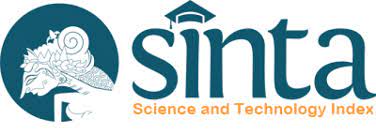Risk Assessment of Productivity Recovery Post Occupational Accident in Indonesia
Keywords:
Risk management, Occupational accident, Feasibility analysisAbstract
Indonesia's public health provider, the Insurance Administration Organization (IAO), provides universal coverage for Work Accident Insurance. As an initiative, it has failed to support all workers. This study assesses productivity recovery risks and associated future costs following occupational accidents, employing risk management methods and scenario analyses to aid decision-making in Indonesia. Focusing on formal workers in Surabaya, this research examines the balance between government benefits and expected productivity rebound upon return. Six risk types are identified and analysed, while the most prevalent risks involve workers still undergoing treatment with uncertain outcomes. As existing coverage schemes risk negative cash flow and deficits, this study also calculates the budget needed for zero-accident targets and maximum compensation to balance government obligations and workers' remuneration. This study has successfully captured the critical factors that can lead to refining coverage and addressing financial shortfalls, allowing improved support for workers' recovery and return productivity.
Downloads
References
BPS. (2019). East Java Population projections 2015–2015. BPS. [Online] Available at: https://jatim.bps.go.id/publication/2019/04/17/12197434047d37c17efe921e/proyeksi-penduduk-kabupaten-kota-provinsi-jawa-timur-2015-2025--hasil-supas2015-.html [Accessed 18 Mar 2021].
Farrington, J., & Farrington, C. (2005). Rural accessibility, social inclusion and social justice: towards conceptualization. Journal of Transport Geography, 13(1), 1–12. doi:10.1016/j.jtrangeo.2004.10.002
McDonagh, J. (2006). Transport policy instruments and transport-related social exclusion in rural Republic of Ireland. Journal of Transport Geography, 14(5), 355–66. doi:10.1016/j.jtrangeo.2005.06.005
Cascajo, R., & Monzon, A. (2014). Assessment of innovative measures implemented in European bus systems using key performance indicators. Journal of Public Transportation, 6(3), 257–82. doi:10.1007/s12469-014-0085-0
Candelieri, A., et al. (2019). Vulnerability of public transportation networks against directed attacks and cascading failures. Journal of Public Transportation, 11(1), 27–49. doi:10.1007/s12469-018-00193-7
Imaz, A., et al. (2015). Investigating the factors affecting transit user loyalty. Journal of Public Transportation, 7(1), 39–60. doi:10.1007/s12469-014-0088-x
Mikhaylov, A. S., et al. (2015). Russian public transport system: the customers’ feedback on the service provision. Journal of Public Transportation, 8(1), 125–41. doi:10.1007/s12469-015-0111-x
Von Rosing, M., & Erasmus, J. (2015). Variation in business processes. In M. Von Rosing & J. Erasmus (Eds.), The complete business process handbook (pp. 459–78). Elsevier. doi:10.1016/B978-0-12-799959-3.00022-7
Kaniski, I., & Vincek, I. (2018). Business processes as business systems. Journal of Technology, 12(1), 55–61. doi:10.31803/tg-20170808183458
Davenport, T. H., & Prusak, L. (1993). Blow up the corporate library. International Journal of Information Management, 13(6), 405–12. doi:10.1016/0268-4012(93)90057-B
Bititci, U. S., et al. (2011). Managerial processes: business process that sustain performance. International Journal of Operations & Production Management, 31(8), 851–91. doi:10.1108/01443571111153076
Harvey, J., et al. (2005). Introduction to managing risk: topic gateway series No. 28. CIMA. [Online] Available at: https://www.cimaglobal.com/Documents/ImportedDocuments/cid_tg_intro_to_managing_rist.apr07.pdf [Accessed 18 Mar 2021]
Srinivas, K. (2019). Process of risk management. In K. Srinivas (Ed.), Perspectives on risk, assessment, and management paradigms. IntechOpen. doi:10.5772/intechopen.80804
Institute of Risk Management. (2018). A risk practitioners guide to ISO 31000:2018. IRM. [Online] Available at: http://www.demarcheiso17025.com/document/A%20Risk%20Practitioners%20Guide%20to%20ISO%2031000%20%96%202018.pdf [Accessed 18 Mar 2021].
Fahmi, I. (2013). Risk Management: Case, Theory, Solution. Alfabeta.
Merna, T., & Al-Thani, F. F. (2008). Corporate risk management (2nd ed.). Wiley.
Schueler, P., & Buckley, B. (2014). Re-engineering clinical trials (1st ed.). Academic Press.
Carlson, C. S. (2015). Understanding and applying the fundamentals of FMEAs. IEEE. [Online] Available at: https://www.weibull.com/pubs/2015_RAMS_fundamentals_of_fmeas.pdf [Accessed 18 Mar 2021].
bin Abdullah, et al. (2005). Development of FMEA information system for manufacturing industry. In: 3rd International Conference on Modeling and Analysis of Semiconductor Manufacturing, Johor.
Thomas, et al. (2013). The risk of using risk matrices. SPE Economics & Management. doi:10.2118/166269-MS
Shively, G. (2012). An overview of benefit-cost analysis. ResearchGate. [Online] Available at: https://www.researchgate.net/publication/255661807_An_Overview_of_Benefit-Cost_Analysis [Accessed 18 Mar 2021].
de Rus, G. (2021). Introduction to cost-benefit analysis: looking for reasonable shortcuts (2nd ed.). Edward Elgar.
Zerbe, R. O., & Scott, T. (2015). A primer for understanding benefit-cost analysis. Benefit-Cost Analysis Center, The Daniel J. Evans School of Public Affairs, University of Washington. [Online] Available at: https://www.aisp.upenn.edu/wp-content/uploads/2015/09/0033_12_SP2_Benefit_Cost_000.pdf [Accessed 18 Mar 2021].
International Standard Organization. (2018). ISO 31000:2018 Risk management – Guidelines. ISO. [Online] Available at: https://www.iso.org/iso-31000-risk-management.html [Accessed 18 Mar 2021].










